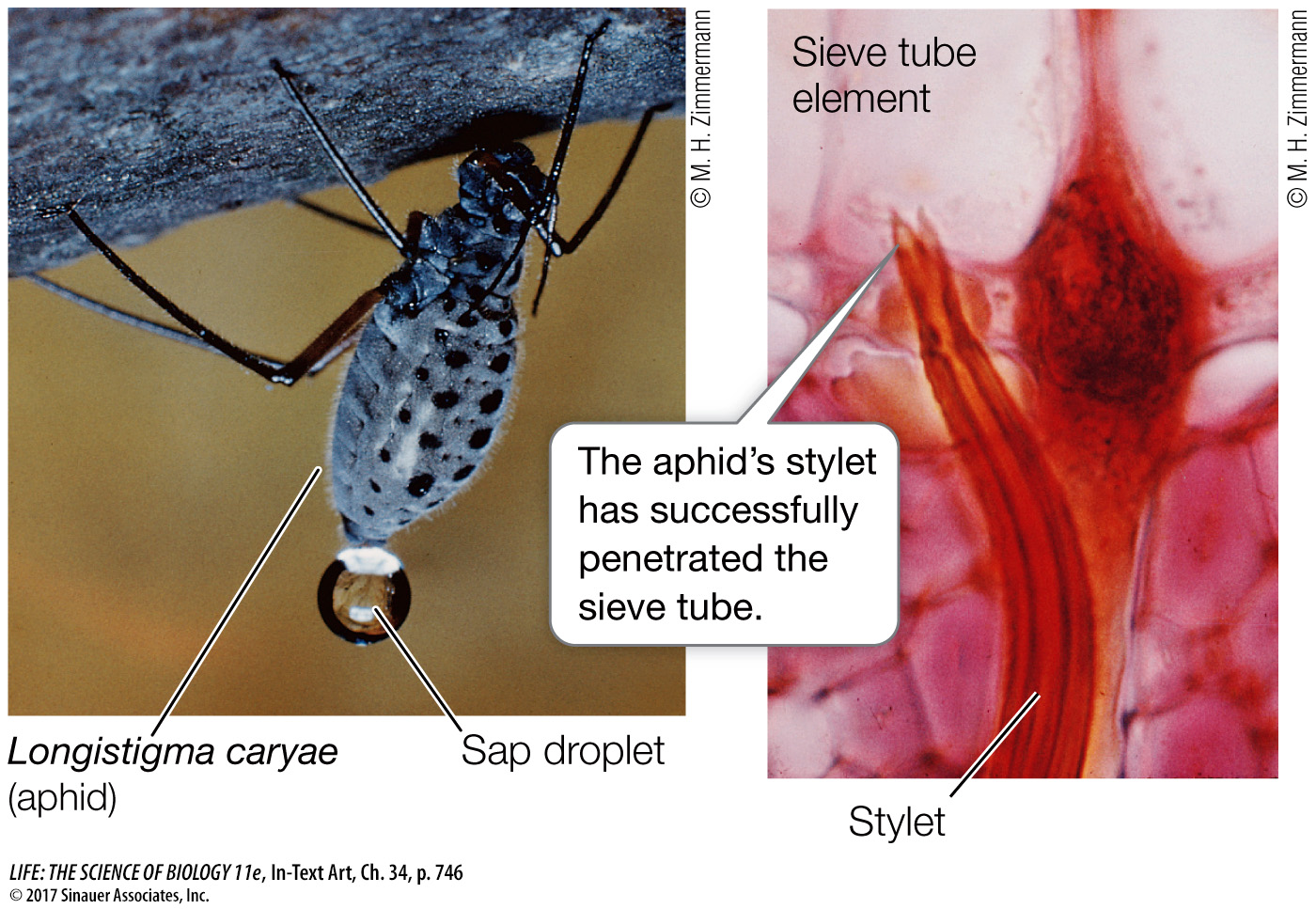Sucrose and other solutes are carried in the phloem
Evidence that the phloem carries sugar and other solutes was first obtained in the 1600s when the Italian scientist Marcello Malpighi removed a ring of bark from the trunk of a tree—

Malpighi correctly concluded that a solution coming from the leaves above the girdle was trapped in the bark. Later the bark below the girdle died, presumably because it no longer received nutrients from the leaves. Eventually the roots, and then the entire tree, died—
The cells that make up the phloem’s conducting tubes are sieve tube elements (see Figure 33.8C). Like the vessel elements in the xylem, sieve tube elements meet end-

What happens next is truly remarkable and makes sieve tube elements among the most unusual cell types in nature. As the holes in the sieve plates expand, most of the cell contents are lost, including the nucleus, Golgi apparatus, and most of the ribosomes and cytoskeleton. Despite this, sieve tube elements live for an entire growing season in deciduous trees, and for decades in some other plants. How can sieve tube elements live for so long with no nucleus? The answer is that each sieve tube element has one or more companion cells (see Figure 34.9). Companion cells are produced as daughter cells along with the sieve tube elements when parent cells divide. Numerous plasmodesmata link a companion cell with its neighboring sieve tube element. Companion cells retain all their organelles and provide all the components needed to maintain the sieve tube elements—
Plant biologists have used aphids to precisely analyze the contents of the phloem. Aphids are insects that feed on plants by drilling into sieve tube elements with a specialized organ, the stylet. The pressure potential in the sieve tube is higher than that outside the plant, so the phloem contents are forced through the stylet into the aphid’s digestive tract. So great is the pressure that some of the liquid is forced through the insect’s body and out its anus.
746

If an aphid is frozen in the act of feeding, its body can be chopped off the plant stem, leaving the stylet intact. Phloem sap continues to flow from the stylet for hours, and can be collected for analysis. These and other experiments led to several important observations:
Sucrose makes up 90 percent of the phloem sap solutes. The phloem sap also contains hormones, proteins, small molecules such as amino acids, mineral nutrients, and viruses.
The flow rate can be very high, as much as 150 centimeters per hour.
Different sieve tube elements conduct their contents in different directions—
for example, up or down the stem. Therefore the overall movement in the phloem is bidirectional. The movement of phloem sap requires living cells, in contrast to movement in the xylem.